Lasagna Braised Beef Mascarpone Ricotta Parmesan Mozzarella

This Traditional Italian Lasagna with Ricotta is my favorite family recipe! It's loaded with four kinds of cheese, plus the most flavorful meat filling! Top it with marinara or Italian meat sauce and prepare to swoon.
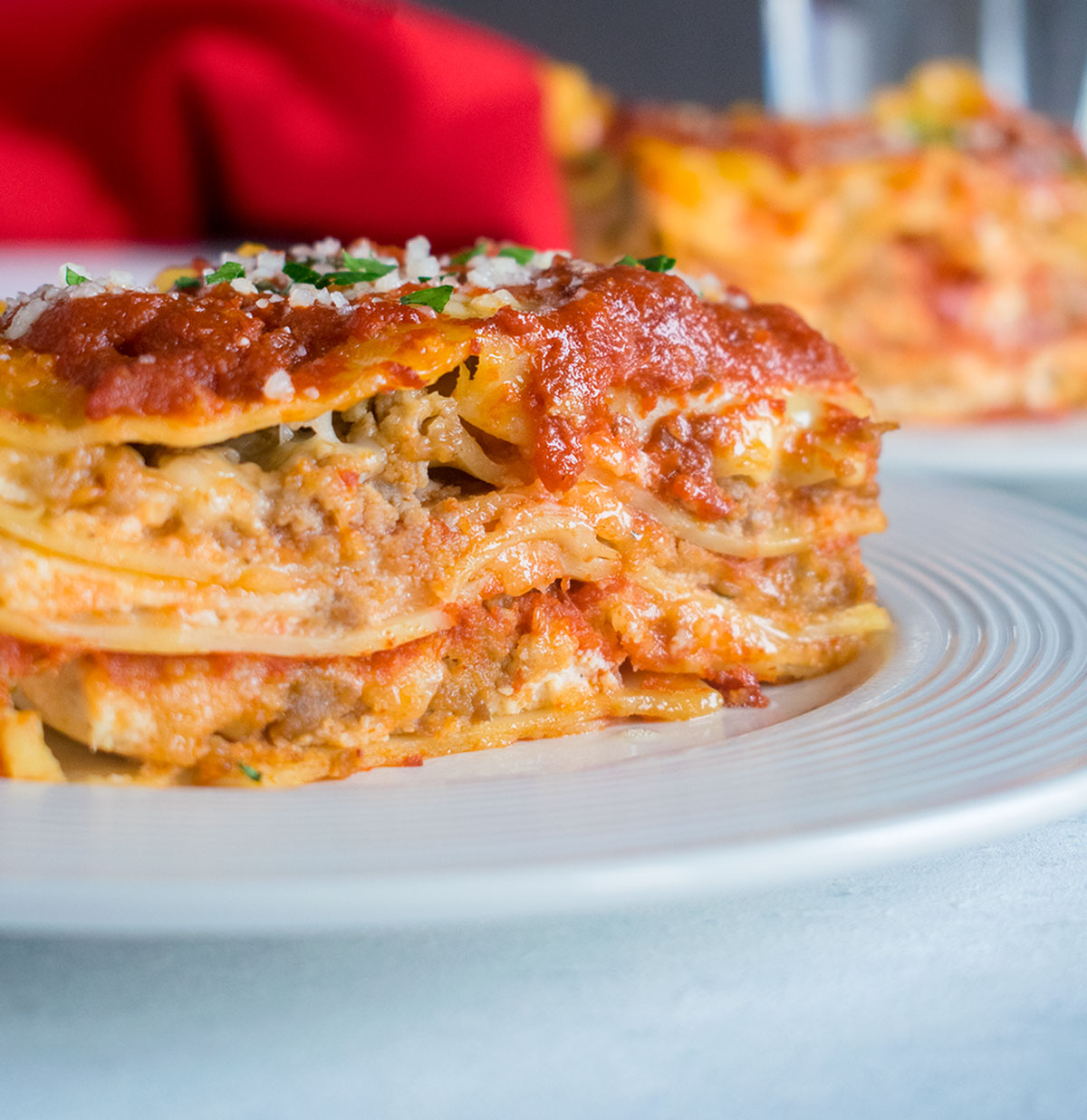
My family's traditional Italian lasagna with ricotta is my favorite dish of all time. In fact, I would request it for my last meal.
But, who thinks of such things? (Cough, cough.) Don't forget Mom's Spinach Ricotta Pie, and make sure there's some Italian Cookies for dessert.
Anyway, did you know lasagna dates back to the Middle Ages in Naples, where my family comes from? In Naples, lasagna includes ricotta, instead of the béchamel sauce that's typical in the region of Emilia Romagna.
Let's take a look at all the goodness involved in our epic lasagna.
Ingredients for traditional Italian lasagna
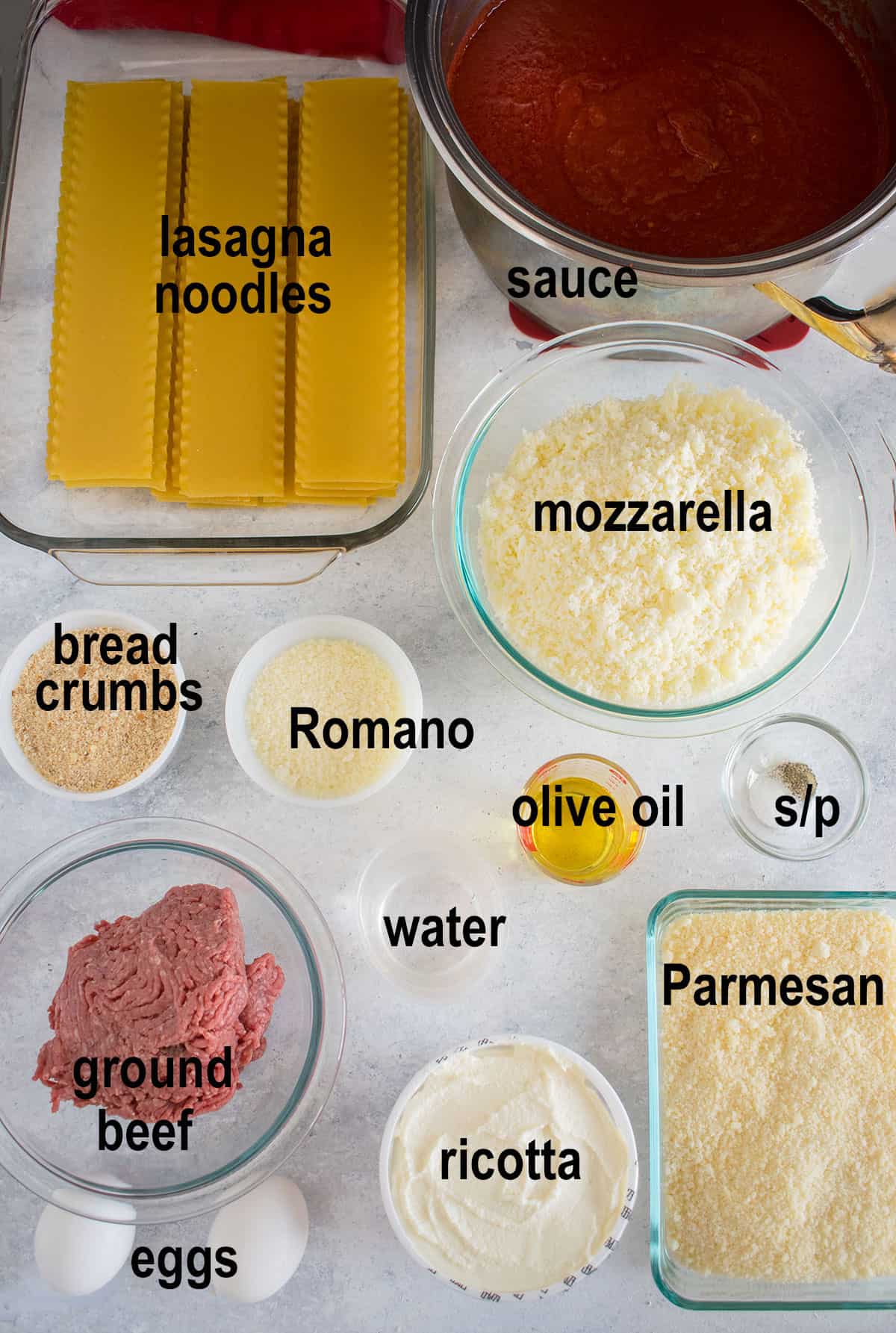
Sauce: You'll need three quarts of tomato sauce, such as my marinara or meat sauce. I've linked to both of them at the top of this post and in the recipe card. Either one is delicious here.
Cheese: As you can see, we have four kinds of Italian cheeses. The Parmesan and Romano should be freshly grated, and the mozzarella freshly shredded. I use my Vitamix (affiliate link) to make it easier.
Meat: We're using lean ground beef that will get fixed with Italian-seasoned bread crumbs, Romano and eggs to form a delicious filling that tastes like a meatball. More on that in a bit!
Lasagna noodles: While no-boil lasagna noodles are super convenient, I really prefer the thicker, sturdier texture of the traditional kind that you boil. Here are some helpful tips.
How to cook lasagna noodles
Adding a little olive oil to the pot of water helps prevent the sheets of lasagna from sticking.
Boil the noodles for just under half the cooking time listed on the package, because the oven will take care of the rest. (No mushy pasta allowed!) This is an important trick for making sure any baked pasta you make is al dente, or pleasantly firm.
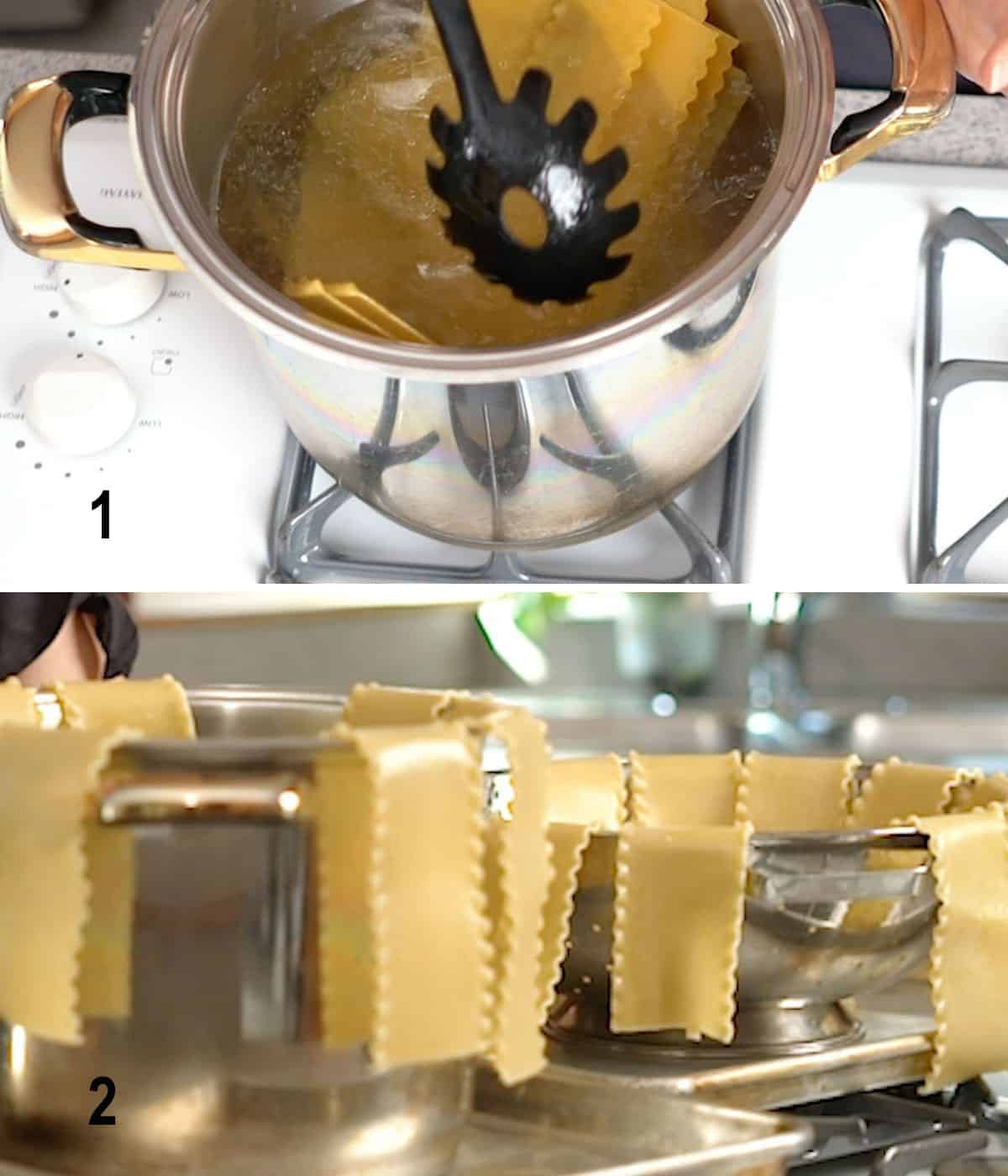
After you drain the lasagna noodles, carefully hang them over the sides of your pot and colander to keep them from sticking to one another. Be careful, because they can be hot at first.
Making the meat filling
See the recipe card at the bottom of this post for full instructions, but here is an overview.
- Add a little water to the the ground beef, eggs, bread crumbs and Romano in a bowl. Mix with your hands.
- Add the meat mixture to a heated, oiled skillet and break up the filling with a spoon.
- Brown the meat until it's no longer pink. If you see any excess fat, drain it.
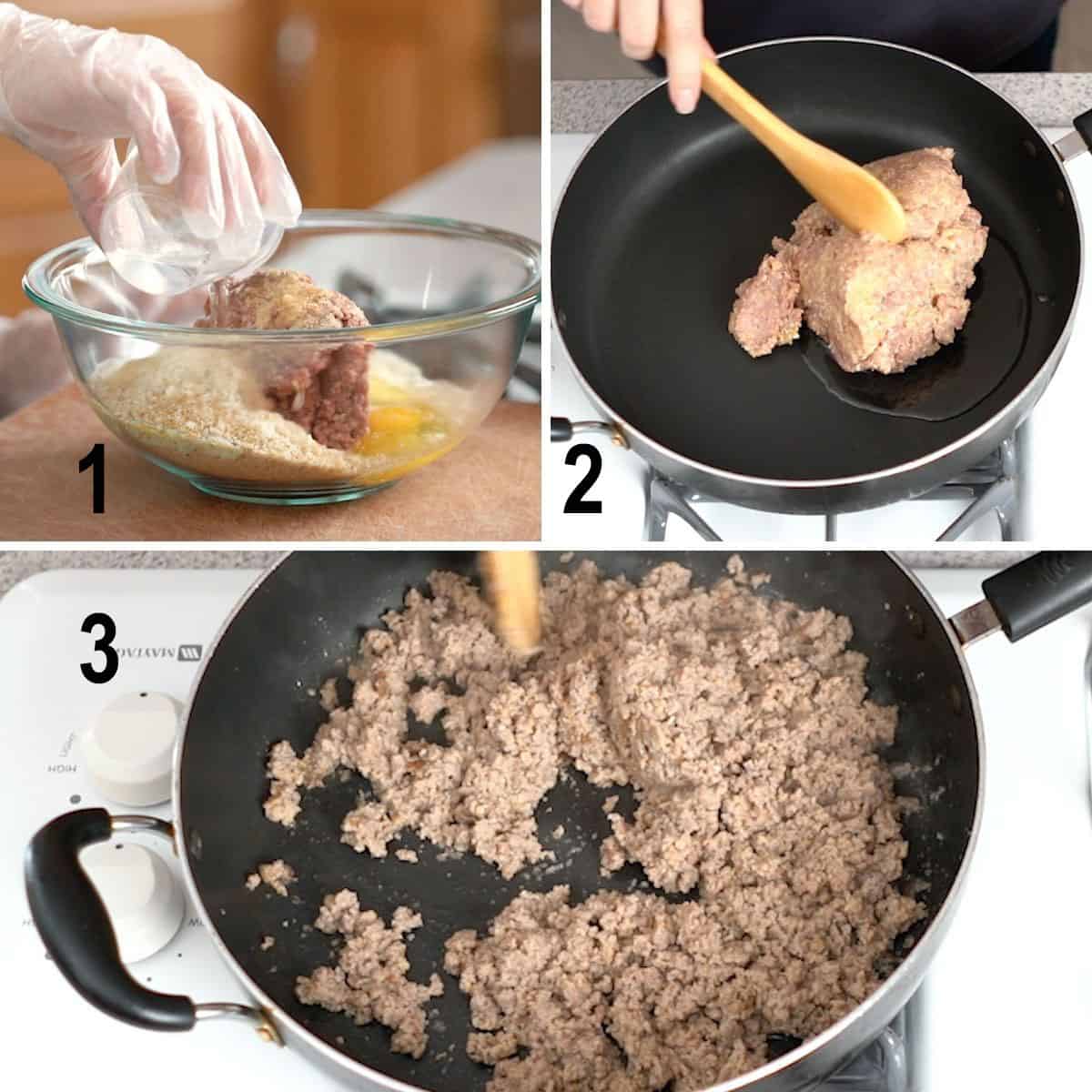
How to layer lasagna
This traditional Italian lasagna is stacked high, with three full layers of pasta filled with sauce, ricotta, the meat mixture and plenty of mozzarella and Parmesan. For each of these three layers, place the pasta in the opposite direction as the previous layer.
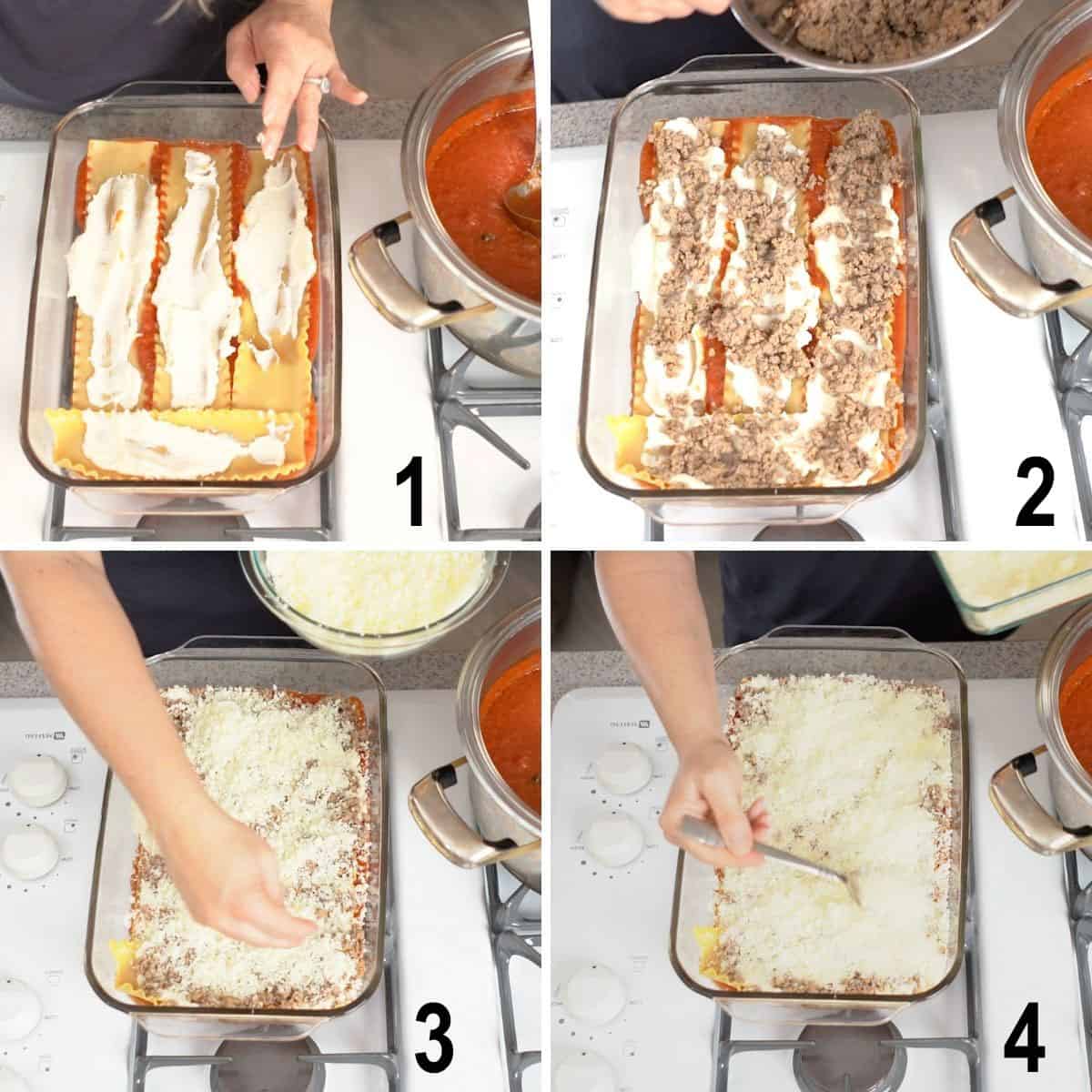
- Add a couple ladles of sauce, then lay down some lasagna noodles in a single layer. Spread ricotta on the pasta.
- Add a third of the meat filling on top of the ricotta.
- Sprinkle on a third of the shredded mozzarella.
- Sprinkle on some Parmesan to cover the layer.
Repeat two more times, until you have three filled layers.
For the top layer
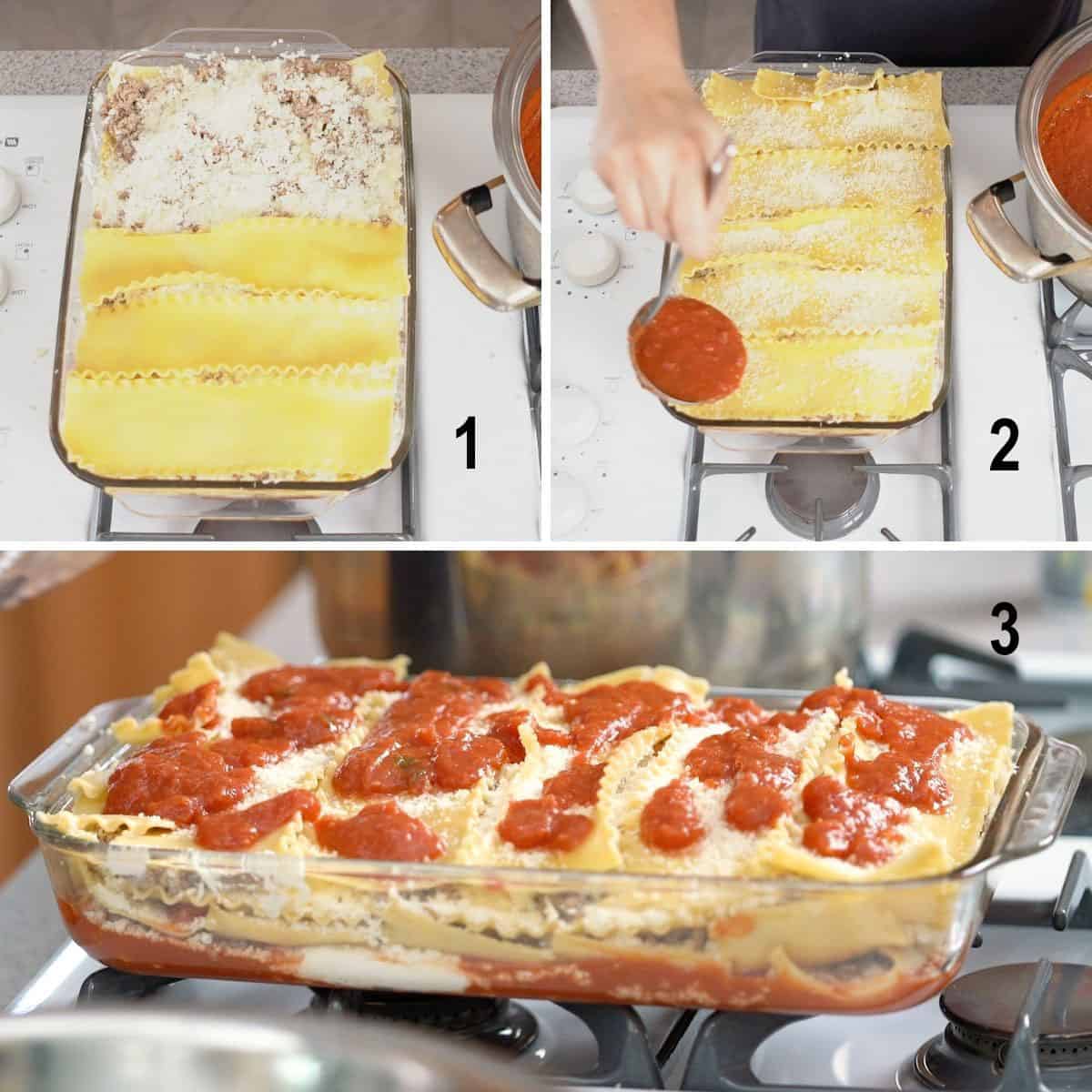
- Add one last layer of pasta, in the opposite direction as the previous layer.
- Sprinkle on some Parmesan and ladle on some sauce.
- Now that your traditional Italian lasagna is fully assembled, you can cover it with greased foil and bake, or refrigerate it to bake the following day.
Frequently asked questions
Can this be made ahead of time?
At the very least, you can make the sauce and grate/shred the cheeses the day before. You also can make the meat filling the day before. If you want, you can assemble the entire lasagna, cover and refrigerate it, then bake it the next day, after letting it sit at room temperature for 30 minutes.
Can you freeze lasagna before it's baked?
You can freeze the assembled lasagna before baking it. Just make sure the meat layer is cooled off first. Cover the lasagna well with heavy foil, then thaw it overnight in the refrigerator before baking.
Can you freeze lasagna after it's baked?
Yes, as long as you let the lasagna cool to room temperature before freezing it. Again, cover it with heavy foil first. You also could put individual slices in foil and place them in freezer bags. Let the lasagna thaw overnight in the refrigerator before baking.
How do you reheat lasagna?
You can reheat individual slices in the microwave, covered loosely with wax paper. To reheat a pan of lasagna, cover it with greased foil and bake at 350 degrees F for 40 minutes, or until the internal temperature reaches 165 degrees F.
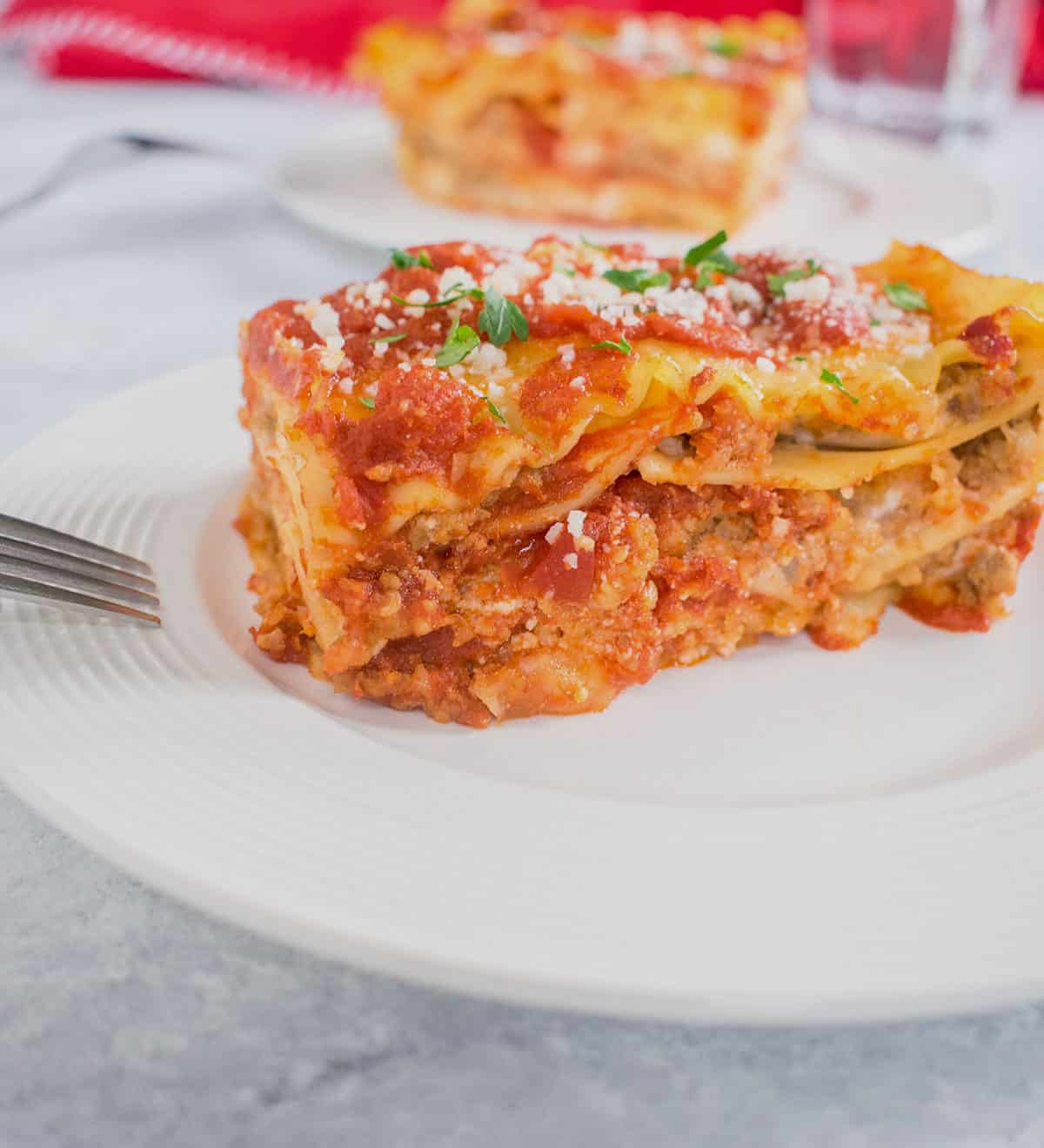
Friends, this traditional Italian lasagna with ricotta is the best I've ever had! I hope you'll try it and let me know what you think!
What to serve with lasagna
This traditional Italian lasagna is a full meal in itself, so you could just serve it with The Best Italian Green Salad. But, we also love to serve this with Italian Chicken Cutlets and some crusty Homemade Italian Bread!
Other pasta dishes to try
If you love pasta dishes as much as I do, don't miss Homemade Manicotti, Pasta alla Vodka or Spaghetti Bolognese. For tomato-free sauces to top your pasta, try pesto, Alfredo, or creamy walnut sauce.
Enjoy!
(Recipe Source: Adapted from my Mom's lasagna. Originally published on April 2, 2022 and updated now with new photos, text and a video.)
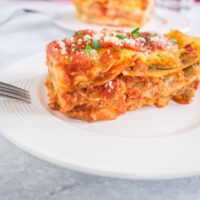
- 3 quarts tomato sauce (See notes for recipe links. Make 3 batches of my marinara or one batch of my meat sauce. )
- 16 ounces mozzarella (shredded or grated)
- 8 ounces fresh Parmesan (grated)
- 16 ounces ricotta
- 16 ounces lasagna noodles
- 4 tablespoons olive oil (divided use)
- ⅛ teaspoon salt
- ⅛ teaspoon pepper
-
Start by cooking your tomato sauce. While that's on the stove, you can grate your Parmesan, Romano and mozzarella. (I use my blender.) Set bowls of each cheese aside. Season the ricotta with ⅛ teaspoon each of salt and pepper, and set that aside as well. (If your sauce needs a while to cook, you might want to refrigerate your cheeses in the meantime.)
-
If you are using lasagna noodles that need to be boiled, fill a tall pot ⅔ full with salted water and add 3 tablespoons of olive oil to the water. Set it on the stove, covered, over high heat. When the water comes to a rolling boil, add the lasagna noodles and stir them periodically as you cook them for just under half the time listed on the package directions. (It will take 4-6 minutes, depending on the brand you use.)
-
Drain the lasagna noodles in a colander in the sink and carefully (they will be hot) hang them over the edges of your pasta pot to dry and cool. (You may need to have some hanging on the colander too.)
-
Prepare your meat mixture in a medium bowl, adding all the meat ingredients and gently mixing with your hands until combined. Wash your hands well and heat a tablespoon of olive oil in a large skillet. Add the meat mixture to the skillet and brown it over medium-high heat, stirring as needed, until there is no pink remaining. Drain any liquid in a fine-mesh strainer in the sink.
-
Preheat the oven to 350 degrees F. To assemble the lasagna, set out your bowls of ricotta, mozzarella, and Parmesan near your meat, pasta, and sauce. Cover the bottom of a 9x13 pan with a couple ladles of sauce. Add a layer of lasagna noodles the long way, cutting any extra pieces needed to fill in gaps. (I use kitchen scissors.)
-
On each row, add a heaping tablespoon of ricotta, spreading it in a thin layer on each strip of pasta. Sprinkle on ⅓ of the meat over the ricotta, dispersing it as evenly as you can. Next, sprinkle on ⅓ of the mozzarella. Add a generous handful of Parmesan on top of the mozzarella. (Keep in mind that you will end up with extra Parmesan to serve at the table, so you don't need to put all of the Parmesan inside the lasagna.)
-
Add a couple more ladles of sauce. For the second layer, you will change the direction of the lasagna noodles, placing them the short way, cutting them in half as needed. Repeat with the ricotta, meat, mozzarella and Parmesan.
-
For the third layer, add the sauce and then place the noodles the long way. Continue building your layer as before.
-
For the top, add a layer of lasagna noodles the short way, sprinkle on some Parmesan, and ladle on some sauce. Cover the lasagna with foil that has been greased with non-stick spray.
-
Bake for 1 hour and 10 minutes, and check to see if it is heated through. If so, let the lasagna rest for 10 minutes before cutting it.
-
Serve the lasagna with extra sauce ladled on top and extra Parmesan at the table. Store leftovers in the refrigerator for four days, or freeze.
- For the sauce, use three batches of my Homemade Marinara or one batch of my Italian Meat Sauce.
- Note that if you are making your own sauce, marinara is quicker than making a meat sauce. The prep time in the recipe includes making marinara.
- You can prep and assemble the lasagna the day before, store it covered in the refrigerator, and bake it the following day. If so, you should leave the lasagna out at room temperature for at least 30 minutes before baking.
- Another option is to make your sauce and grate your cheeses the day before, and then finish everything the following day.
- You can freeze the assembled lasagna before baking it. Just make sure the meat layer is cooled off first. Cover the lasagna well with heavy foil, then thaw it overnight in the refrigerator before baking.
- You can freeze the lasagna after it's baked, as long as you let it cool to room temperature first.
- You can reheat individual slices of lasagna in the microwave, covered loosely with wax paper. To reheat a pan of lasagna, cover it with greased foil and bake at 350 degrees F for 40 minutes, or until the internal temperature reaches 165 degrees F.
Calories: 879 kcal | Carbohydrates: 73 g | Protein: 55 g | Fat: 41 g | Saturated Fat: 21 g | Cholesterol: 167 mg | Sodium: 3026 mg | Potassium: 1623 mg | Fiber: 8 g | Sugar: 18 g | Vitamin A: 2501 IU | Vitamin C: 25 mg | Calcium: 894 mg | Iron: 7 mg
Source: https://cookingwithmammac.com/traditional-lasagna/
0 Response to "Lasagna Braised Beef Mascarpone Ricotta Parmesan Mozzarella"
إرسال تعليق